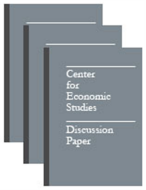Multiregional Firms and Region Switching in the US Manufacturing Sector
Multiregional Firms and Region Switching in the US Manufacturing Sector
Abstract
This paper uses data on US manufacturing firms to study a new extensive margin, the reallocation of resources that takes place within surviving firms as they open and close establishments in different regions. To motivate the empirical analysis, I extend existing models of industry dynamics to include production-location decisions within firms. The empirical results provide support for the mechanisms emphasized by the theoretical model. In the data, only about 3 percent of firms make the same product in more than one region, but these multiregional firms are more productive on average compared to single-region firms, and they account for about two-thirds of output. The results also show that "region-switching" is pervasive among multiregional firms, is correlated with changes in firm characteristics, and leads to a more efficient allocation of resources within firms.
Others in Series
Working Paper
Working Paper
Working Paper




